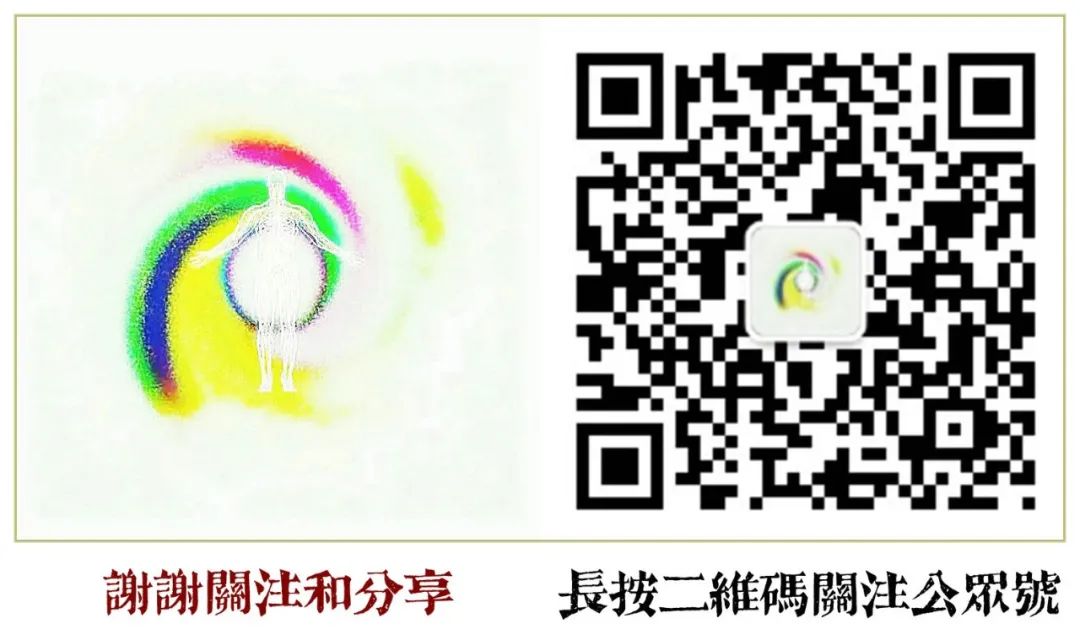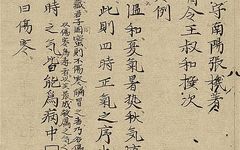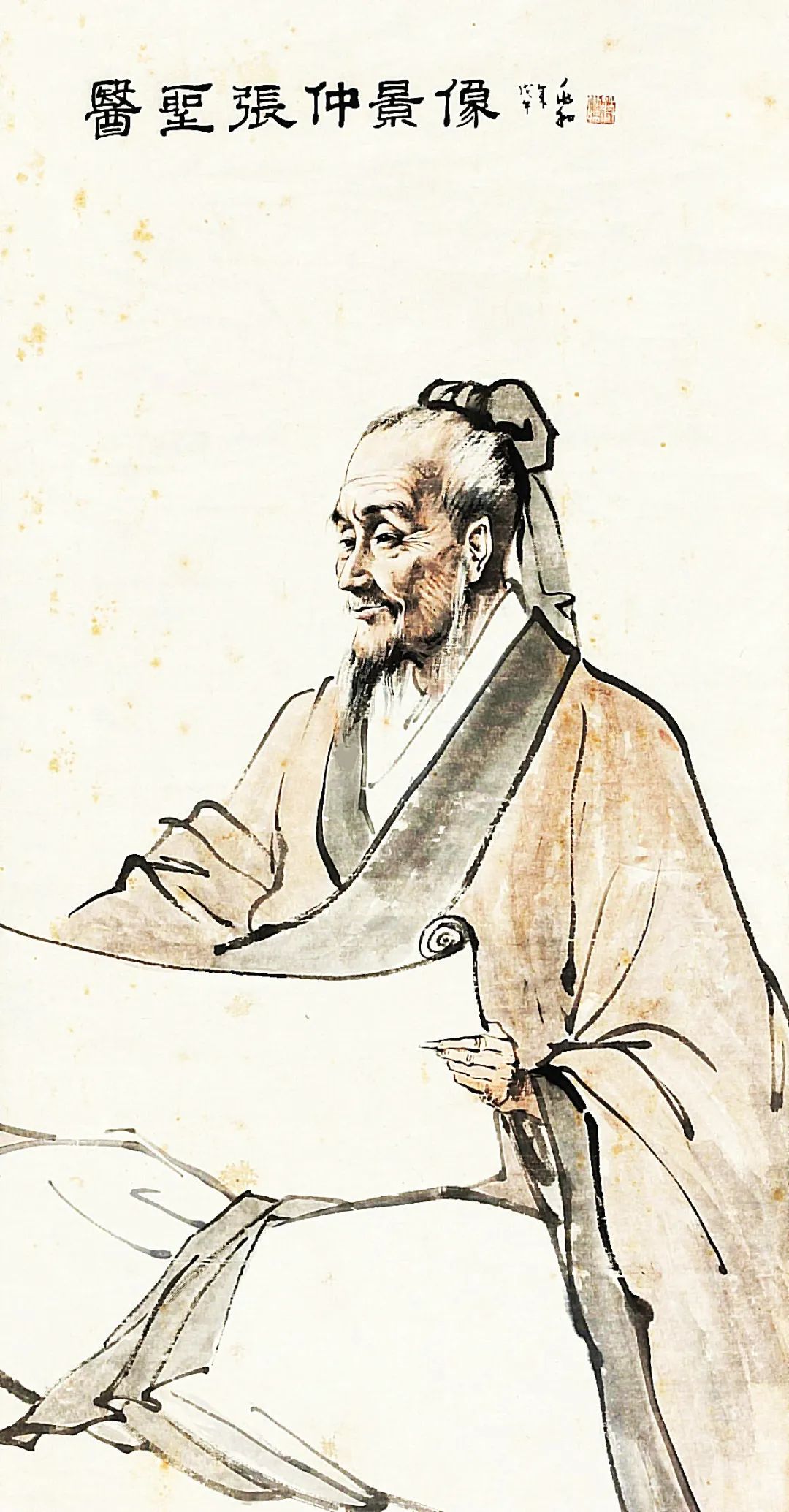
Introduction to the Treatise on Cold Damage
The Shang Han Lun (Treatise on Cold Damage) is a classic work of Han medicine authored by Zhang Zhongjing during the Eastern Han dynasty. It is a specialized text that elucidates the treatment principles for externally contracted febrile diseases, consisting of 12 volumes, of which 10 volumes and 22 sections have survived to this day.
During its transmission, the original work Shang Han Za Bing Lun (Treatise on Cold Damage and Miscellaneous Diseases) was compiled by later generations, with the content on externally contracted febrile diseases collected into the Shang Han Lun, while the other part, which mainly discusses internal miscellaneous diseases, is titled Jin Gui Yao Lue (Essential Prescriptions from the Golden Cabinet).
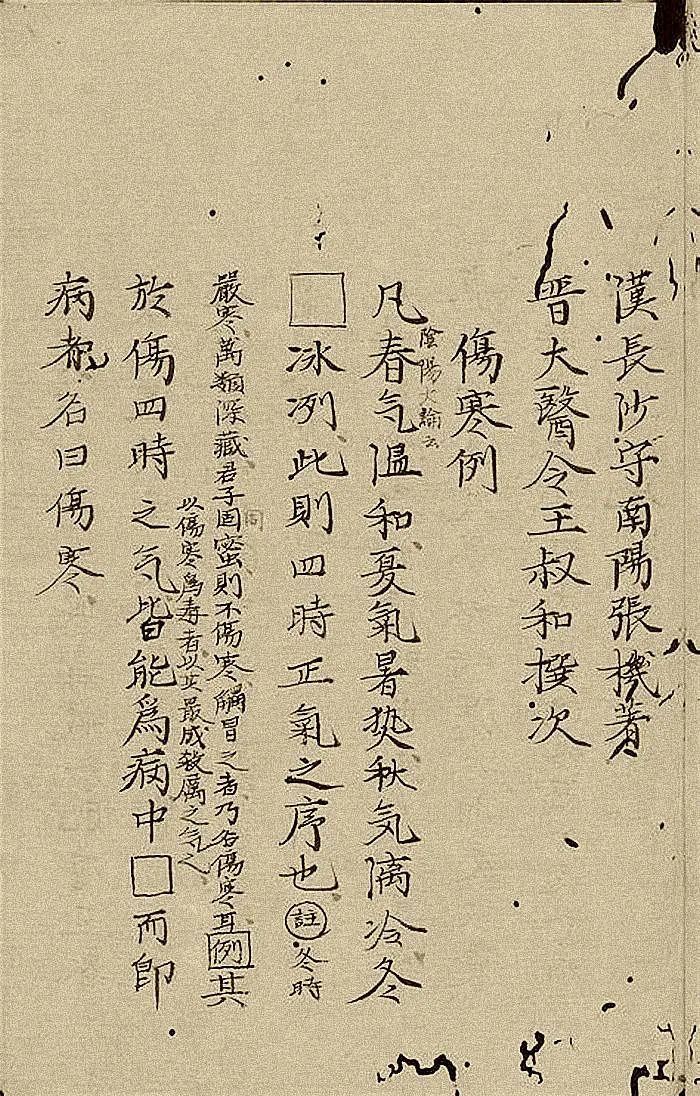
【Explanation of the Title】
Cold damage is a general term used by ancient Chinese to refer to externally contracted diseases, and it is not a specific disease name. The ancients often regarded the inducing factors of diseases as pathogens; cold is not merely what is referred to in modern terms as being cold, but is a general term for all external evils that cause diseases. This can be referenced in the lectures of Mr. Hao Wanshan. The cold damage mentioned in Zhang Zhongjing’s Shang Han Lun carries the same meaning and is unrelated to modern typhoid fever.
【Author Biography】
Zhang Ji, courtesy name Zhongjing, was from Nanyang, Henan Province, born around the second year of Emperor Huan of Han, which is 152 AD, and died in the 24th year of Jian’an, which is 219 AD.
Zhang Zhongjing was born into a declining bureaucratic family; his father, Zhang Zonghan, had served as an official in the court. Due to the special circumstances of his family, he was exposed to many classical texts from a young age.
In his youth, he studied medicine under the famous physician Zhang Bozu from the same district. After thoroughly learning from him and through years of diligent research and clinical practice, he became an outstanding medical figure in the history of Chinese medicine. “Zhongjing’s techniques are refined from Bozu,” and Zhang Zhongjing “surpassed his teacher,” as he “diligently sought ancient teachings and broadly collected various methods.” Around 205 AD, he completed the important work that established the theoretical system of syndrome differentiation and treatment in Chinese medicine, Shang Han Za Bing Lun, which is revered by later generations as the “Saint of Medicine” and the “Ancestor of Formulas.”
【Content Overview】
The Shang Han Lun consists of 10 volumes and 22 sections, listing 113 formulas and utilizing 82 types of medicinal substances.
The first volume includes the chapters “Differentiation of Pulse” and “Normal Pulse,” mainly discussing the pulse, symptoms, and prognosis of cold damage and miscellaneous diseases.
The second volume includes “Examples of Cold Damage,” “Differentiation of Phlegm and Heat Pulse Symptoms,” and “Pulse Symptoms and Treatment of Taiyang Disease,” which mainly summarizes the general principles of occurrence, development, treatment, and prognosis of the six meridians, as well as the diagnosis and treatment of phlegm and heat.
The third to sixth volumes mainly discuss the pulse, symptoms, treatment, and prognosis of diseases related to the six meridians: Taiyang, Yangming, Shaoyang, Taiyin, Shaoyin, and Jueyin.
The seventh to tenth volumes mainly discuss the diagnosis and treatment of cholera, yin-yang transformation, and recovery from exhaustion, as well as the conditions of whether cold damage can induce sweating, vomiting, or purging.
The six meridian syndromes are the framework of the Shang Han Lun.
The six meridian syndromes are the classification of symptoms established in the Shang Han Lun, which later generations consider an unbreakable rule. Zhang Zhongjing observed that although febrile diseases are complex, they can be categorized into six types, while also analyzing the yang heat, exterior excess, and yin cold, interior deficiency in the spirit of the Suwen (Plain Questions). This includes the “Three Yang Syndromes” and “Three Yin Syndromes.”
【Versions in Circulation】
The original Shang Han Lun was organized and compiled by Wang Shuhe during the Western Jin dynasty. By the Five Dynasties and Ten Kingdoms period, it was in a state of crisis, facing the risk of being lost. This book was secretly preserved in the national library of the Northern Song dynasty for about 80 to 90 years. During the Jiayou period (1056-1063), the Northern Song established the Medical Book Correction Bureau, which selected the version presented by Gao Jichong as the base text. It was then edited by Sun Qi, Lin Yi, and others, and in 1065, it was officially published by the court, named the definitive edition of the Shang Han Lun, ending the chaotic transmission and textual errors that had persisted for over 800 years from the end of the Han to the Song dynasty.
In the fourth year of the Jin Huang Tong, which is the 14th year of the Southern Song Shaoxing (1144), Cheng Wujie published the Annotated Shang Han Lun, which had detailed annotations and gradually replaced the white text version of the Shang Han Lun. The white text version was no longer reprinted in the Southern Song dynasty. By the Yuan dynasty, the white text version of the Shang Han Lun was rarely found in society, except for a few collectors.
In the 27th year of the Ming Wanli (1599), Zhao Kaimei, a collector from Changshu, Jiangsu, accidentally obtained the Northern Song edition of the Shang Han Lun in ten volumes and had excellent engravers reproduce this book in the Complete Works of Zhongjing. The original Northern Song edition was soon lost, and the only remaining version is the one by Zhao Kaimei, which is a faithful reproduction of the Song edition, later revered as the Song Edition of Shang Han Lun. Five copies of the Zhao Kaimei version still exist today. The Shang Han Lun has also had a wide influence abroad.
In addition, there are other versions such as the Tang Edition of Shang Han Lun (by Sun Simiao), the Song Edition of Shang Han Lun (by Gao Jichong), the Jin Edition of Annotated Shang Han Lun (by Cheng Wujie), the Song Edition of Shang Han Lun (by Zhao Kaimei), the Kangzhi Edition of Shang Han Lun (Japan), the Kangping Edition of Shang Han Lun (Japan), the Guilin Edition of Shang Han Lun, and the Dunhuang Edition of Shang Han Lun (fragmentary) among others.
【Contributions and Influence】
One of the prominent achievements of the Shang Han Lun is the establishment of the six meridian differentiation system. It employs the four examinations and eight principles to comprehensively elucidate the differentiation of pulse, examination of symptoms, discussion of treatment, establishment of formulas, and the rules of medication for each stage of cold damage. It summarizes the main treatment methods for the six meridian diseases, such as using Ma Huang Tang (Ephedra Decoction) for “Taiyang Cold Damage,” Gui Zhi Tang (Cinnamon Twig Decoction) for “Taiyang Wind Strike,” Bai Hu Tang (White Tiger Decoction) for Yangming meridian syndrome, Cheng Qi Tang (Purge the Qi Decoction) for Yangming organ syndrome, and Xiao Chai Hu Tang (Minor Bupleurum Decoction) for Shaoyang disease. It summarizes the treatment experiences of different disease stages and symptom types, with clear distinctions between primary and secondary issues, and a coherent structure that organically integrates principles, methods, formulas, and medicines, providing essential guidelines for diagnosis and treatment.
Another significant contribution of the Shang Han Lun is its major impact on the study of Chinese herbal formulas. This book records 397 methods and 113 formulas, proposes complete principles for formula composition, introduces treatment methods such as sweating, vomiting, and purging for cold damage, and specifically applies the eight methods to formulas, introducing representative famous formulas such as Gui Zhi Tang, Ma Huang Tang, Da Qing Long Tang (Major Blue Dragon Decoction), Xiao Qing Long Tang (Minor Blue Dragon Decoction), Bai Hu Tang, Ma Huang Xing Ren Shi Gao Gan Cao Tang (Ephedra, Apricot Kernel, Gypsum, and Licorice Decoction), Ge Gen Huang Qin Huang Lian Tang (Kudzu, Scutellaria, and Coptis Decoction), Da Cheng Qi Tang (Major Order the Qi Decoction), Xiao Cheng Qi Tang (Minor Order the Qi Decoction), Tiao Wei Cheng Qi Tang (Regulate the Stomach and Order the Qi Decoction), Da Chai Hu Tang (Major Bupleurum Decoction), and Xiao Chai Hu Tang. Most of the formulas recorded in this book have reliable efficacy, are practical for clinical use, and have been repeatedly applied by generations of physicians over the past thousand years, proving effective time and again. Due to Zhang Zhongjing’s careful selection of herbs, emphasis on compatibility, clear indications, and remarkable efficacy, he is honored as the “Ancestor of Various Formulas” and revered as the “Classic Formulas.”
The Shang Han Lun summarizes the medical achievements of predecessors and rich practical experiences, integrating the essence of medicine before the Han dynasty, and combines his clinical experiences to systematically elaborate on various externally contracted diseases and miscellaneous diseases with a complete theory of differentiation, methods, formulas, and medicines. It holds epoch-making significance in the history of the development of Chinese medicine and serves as a bridge between the past and the future, making important contributions to the development of Chinese medicine. Moreover, the Shang Han Lun not only provides a framework for differentiation and treatment methods for externally contracted diseases but also establishes a standard for differentiation and treatment in various clinical departments of Chinese medicine, thus laying the foundation for differentiation and treatment, and is revered as a classic by later generations of physicians.
Introduction to the Essential Prescriptions from the Golden Cabinet
The Jin Gui Yao Lue (Essential Prescriptions from the Golden Cabinet) is the miscellaneous disease section of the Shang Han Za Bing Lun authored by the famous physician Zhang Zhongjing of the Eastern Han dynasty. It is also the earliest existing specialized book discussing the diagnosis and treatment of miscellaneous diseases in China, originally titled Jin Gui Yao Lue Fang Lun (Discussion of Essential Prescriptions from the Golden Cabinet). “Jin Gui” refers to the place where ancient emperors stored sacred teachings and records, indicating the precious content of this book. During the Northern Song dynasty, Wang Zhu recorded the Jin Gui Yu Han Yao Lue Fang in three volumes, with the upper volume differentiating cold damage, the middle volume discussing miscellaneous diseases, and the lower volume containing its formulas and treatments for women. Lin Yi compiled the miscellaneous diseases and related supplementary formulas from the Jin Gui Yu Han Yao Lue Fang into the Jin Gui Yao Lue Fang Lun. The entire book is divided into three volumes: upper, middle, and lower, containing 25 sections and discussing over 60 diseases, with 262 formulas recorded. The diseases discussed mainly focus on internal miscellaneous diseases, while also covering surgical, gynecological diseases, emergency treatments, dietary taboos, and other content. Together with the Shang Han Lun, it is revered as the “Ancestor of Formula Books” by later generations.
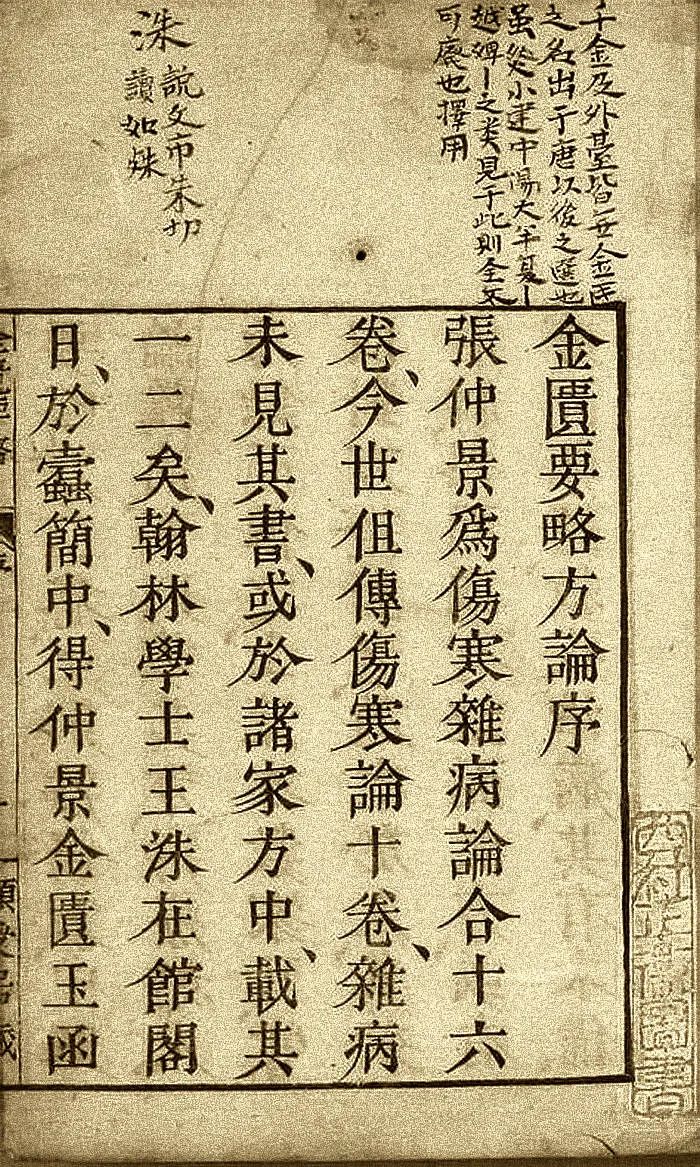
【Content Overview】
The Jin Gui Yao Lue consists of 25 sections. The first section, “Diseases of the Zang-Fu Organs and Meridians,” serves as a general discussion, providing principled guidance on the causes, mechanisms, diagnosis, treatment, and prevention of diseases through examples, thus holding a programmatic significance in the book. The second to seventeenth sections discuss the diagnosis and treatment of internal diseases. The eighteenth section discusses the diagnosis and treatment of surgical diseases. The nineteenth section discusses the treatment of five types of diseases that are difficult to classify. The twentieth to twenty-second sections specifically discuss the diagnosis and treatment of gynecological diseases. The last three sections cover miscellaneous treatment methods and dietary taboos. The original text of the first 22 sections contains 398 entries, and by section titles, it includes over 40 diseases such as spasms, dampness, heat, lily disease, fox disease, yin-yang toxicity, malaria, stroke, rheumatism, blood stasis, deficiency, lung atrophy, lung abscess, cough, shortness of breath, chest obstruction, heart pain, shortness of breath, abdominal fullness, cold hernia, food retention, five zang wind-cold, accumulation, phlegm retention, diabetes, urinary difficulties, gonorrhea, edema, jaundice, palpitations, vomiting, hematemesis, lower gastrointestinal bleeding, chest fullness, blood stasis, vomiting, hiccups, diarrhea, sores, intestinal abscesses, soaking sores, foot pain, swelling of fingers and arms, cramps, fox hernia, roundworms, as well as diseases related to women’s pregnancy, postpartum conditions, and miscellaneous diseases. It records 205 formulas (of which 4 only list the formula names without detailing the herbs), using 155 medicinal substances. In terms of treatment methods, in addition to using medicines, acupuncture and dietary therapy are also employed, with a focus on clinical care. In terms of dosage forms, there are internal medicines such as decoctions, pills, powders, and wines, as well as external treatments such as fumigation, washing, sitting, and applying, totaling about ten types. Some sections provide detailed records of decoction methods, administration methods, and post-medication reactions.
【Background of Compilation】
During the late Eastern Han dynasty, frequent wars and epidemics led to widespread death, and many of Zhang Zhongjing’s relatives also perished from cold damage. In the preface to the Shang Han Za Bing Lun, Zhang Zhongjing states, “My clan originally had many members, about two hundred. Since the Jian’an era, not even ten remain, and among the deceased, two-thirds died from cold damage. Reflecting on the past losses and the inability to save those who died young, I diligently sought ancient teachings, broadly collected various methods, and compiled the Suwen, Jiu Juan, Ba Shi Yi Nan, Yin Yang Da Lun, Tai Lu Yao Lu, and differentiated pulses to create the Shang Han Za Bing Lun in sixteen volumes.” The Jin Gui Yao Lue is a concise version of the miscellaneous diseases section of the Shang Han Za Bing Lun.
【Versions in Circulation】
After the publication of the Shang Han Za Bing Lun, due to wars and other reasons, it soon became scattered. By the Northern Song dynasty, Wang Zhu, a Hanlin scholar, discovered a concise version of the Shang Han Za Bing Lun in the palace library, called Jin Gui Yu Han Yao Lue Fang, which consists of three volumes. The upper volume discusses cold damage, the middle volume discusses miscellaneous diseases, and the lower volume records formulas and treatments for women’s diseases. During the reign of Emperor Shenzong of the Song dynasty, the court summoned Lin Yi and others to edit this concise version. Since the Shang Han Lun already had a relatively complete version compiled by Wang Shuhe, the upper volume was deleted, retaining only the middle and lower volumes. For clinical convenience, the formulas in the lower volume were listed under various symptoms, and it was still compiled into three volumes: upper, middle, and lower. Additionally, various formulas from other books that cited Zhang Zhongjing’s treatments for miscellaneous diseases and some effective prescriptions from later physicians were collected and classified at the end of each section, titled Jin Gui Yao Lue Fang Lun. Later generations abbreviated Jin Gui Yao Lue Fang Lun to Jin Gui Yao Lue or Jin Gui.
【Reviews and Prefaces】
Zhang Zhongjing compiled the Shang Han Za Bing Lun into sixteen volumes, but today only the Shang Han Lun of ten volumes is transmitted, and the miscellaneous diseases section is not seen in its entirety, or only partially included in various formula collections. Wang Zhu, the Hanlin scholar, discovered the Jin Gui Yu Han Yao Lue Fang in the palace library, which consists of three volumes: the upper volume differentiates cold damage, the middle volume discusses miscellaneous diseases, and the lower volume records formulas and treatments for women. He recorded and transmitted it to scholars, and it proved effective when applied to patients. However, there are instances where there are symptoms without formulas, or formulas without symptoms, which may not be sufficient for treating diseases. The state ordered Confucian scholars to correct medical texts, and I, Qi, first corrected the Shang Han Lun, and then the Jin Gui Yu Han Yao Lue. Now, this book has been compiled, still listing formulas under symptoms for convenience in urgent situations. Additionally, I collected various formulas scattered in other books and attached them at the end of each section to broaden its methods. Due to the many sections in the cold damage text, I divided it from miscellaneous diseases to dietary taboos, totaling 25 sections, excluding duplicates, and compiled 262 formulas into three volumes: upper, middle, and lower, retaining the original title Jin Gui Fang Lun. I have read in the Wei Zhi: Biography of Hua Tuo that “a book can save lives.” Every time I observe the diseases treated by Hua Tuo, many are strange and do not conform to the teachings of the sages; I believe that the one who saves lives must be Zhang Zhongjing’s book. Great is the sacred law of the flame farmer, belonging to my prosperous dawn. I respectfully regard the sovereign, who inherits the great rule, nurtures the people, promulgates formula books, and alleviates suffering, so that harmony fills the world, and all things are in harmony.
Presented by the Right Assistant Minister of the Crown Prince, Gao Baoheng, the Minister of the Department of Officials, Sun Qi, and the Minister of the Department of Seals, Lin Yi, among others.
